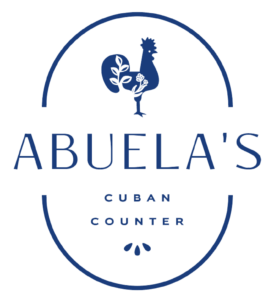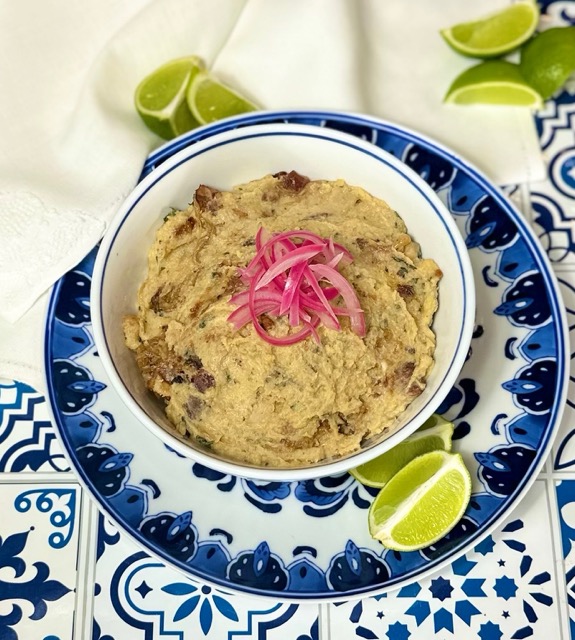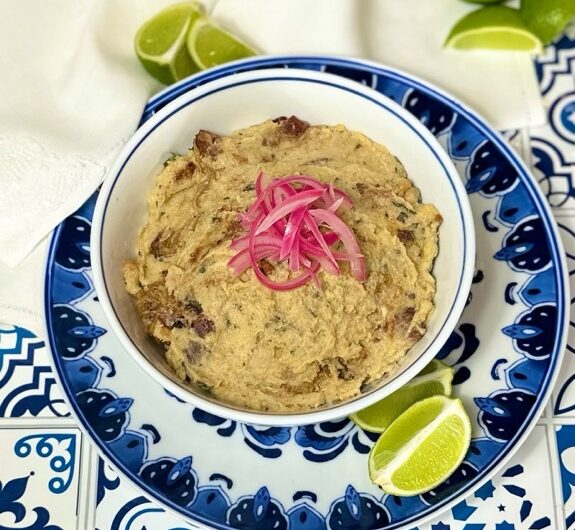This classic Cuban Fufu Recipe is going to take you step by step to making a delicious traditional fufu. It’s quick and easy to do. Let’s hop right in.
What is Fufu?
Fufu is essentially, mashed plantain. Plantains are a less sweet, starchier equivalent to their cousin, the banana. Think of them as banana-adjacent. A major difference being they should almost always be cooked before eating. Plantains are not great raw, so don’t be tricked by their banana-like qualities.
Cooked plantains are nutritionally very similar to a potato, calorie-wise, but contain more of certain vitamins and minerals. They’re a rich source of fiber, vitamins A, C, and B-6, and the minerals magnesium and potassium.
Cuban Fufu vs Dominican Mangu vs Puerto Rican Mofongo
Fufu’s roots begin in West Africa, where mashed plantains have always been the staple starch in their diet. In some countries they are fried or boiled but they almost always smashed together with some type of salty pork product like bacon. Plantains are actually an extremely important staple for people in tropical countries.
In the Dominican, they have a similar dish called Mangu. It has a smoother texture and served usually for breakfast, however could be eaten any time of day. In the DR it is usually served with eggs and sausage.
In Puerto Rico, they have Mofongo. The difference between Fufu and Mofongo is in Mofongo, plantains are fried, then vigorously smashed together. In the Fufu, the plantains are boiled, not fried. Puerto Ricans also love to top it with anything from seafood to fried pork. Think of camarones over a bed of Mofongo, heaven!
Make Fufu not Tostones
Usually when a person has green plantains, their mind immediately goes to tostones. Tostones (try OUR recipe) are twice fried smashed plantains topped with salt and served with Mojo. Fufu is the “other” popular dish with green plantains. As mentioned above, the plan is to boil the plantains, and then mash them together with crispy bacon and sauteed onions and garlic. Then there is chicken broth to help smooth it out and add even more flavor.
Fufu is really an ideal side dish. It comes together quickly, it’s very delicious, and has that ability to soak up the flavor of whatever you throw on top of it.
What would we serve over our Fufu?
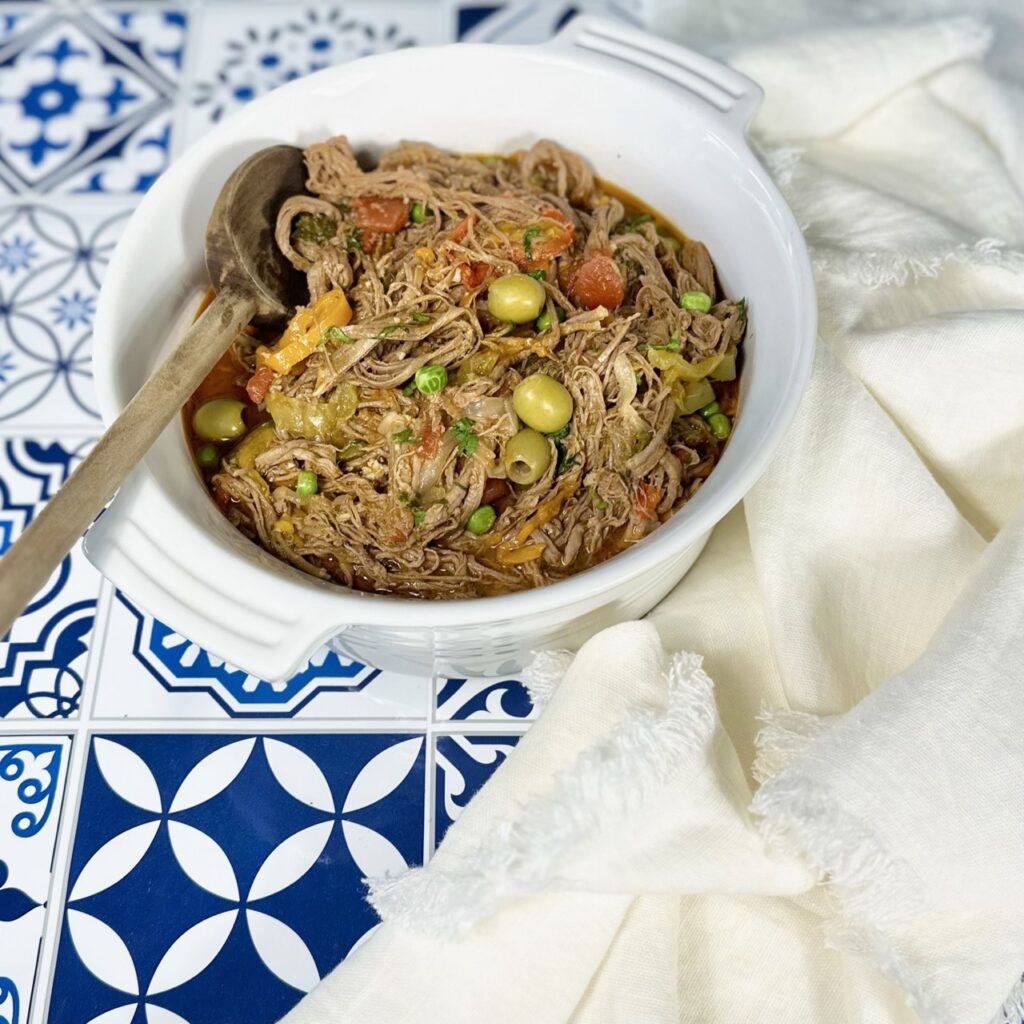
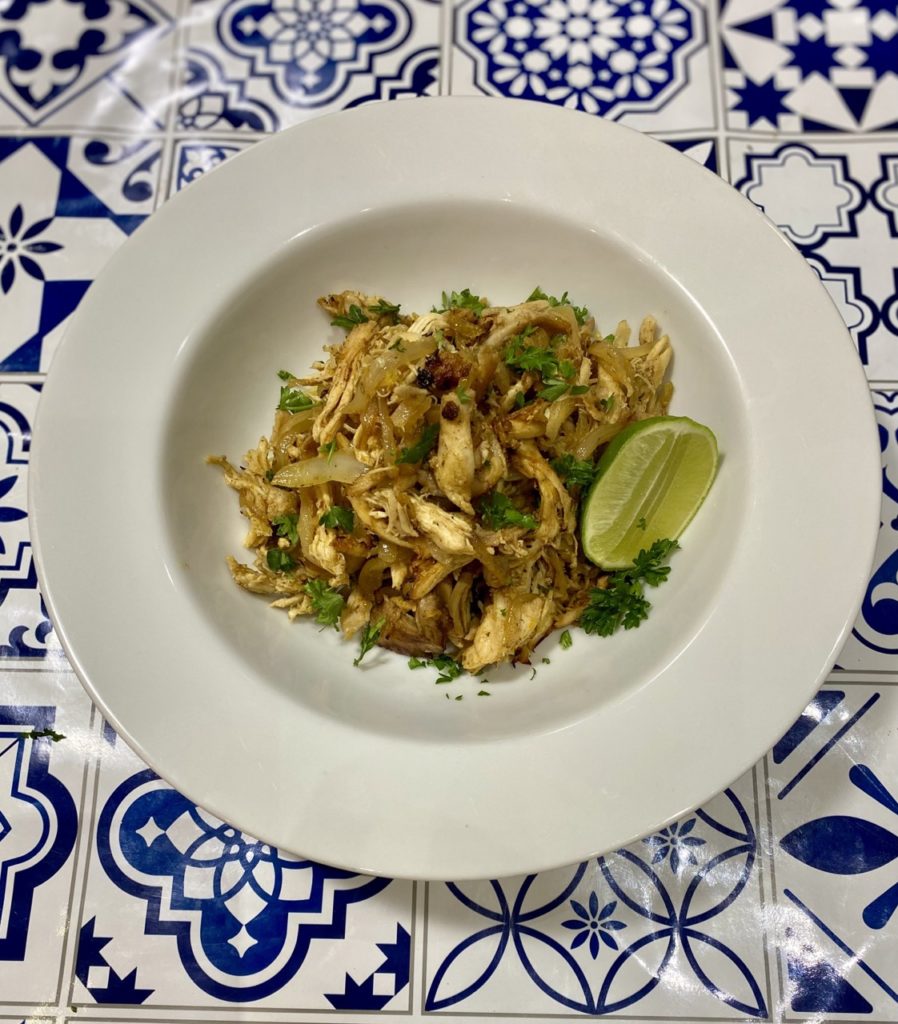
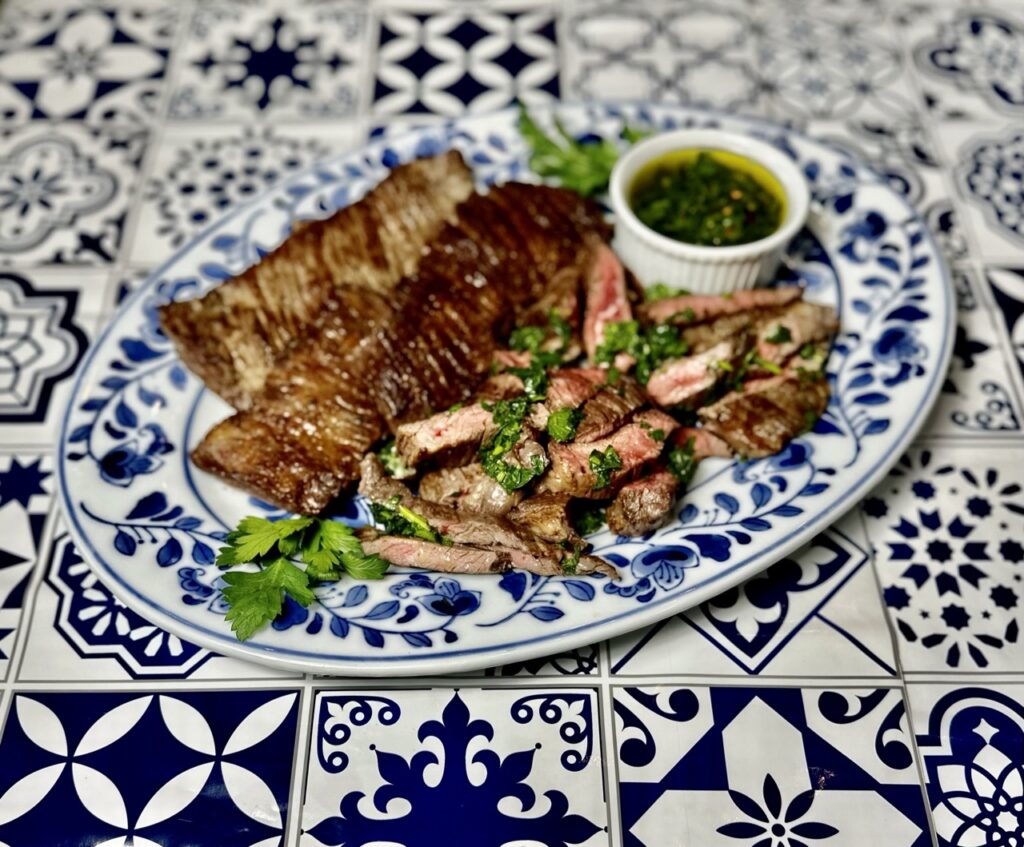
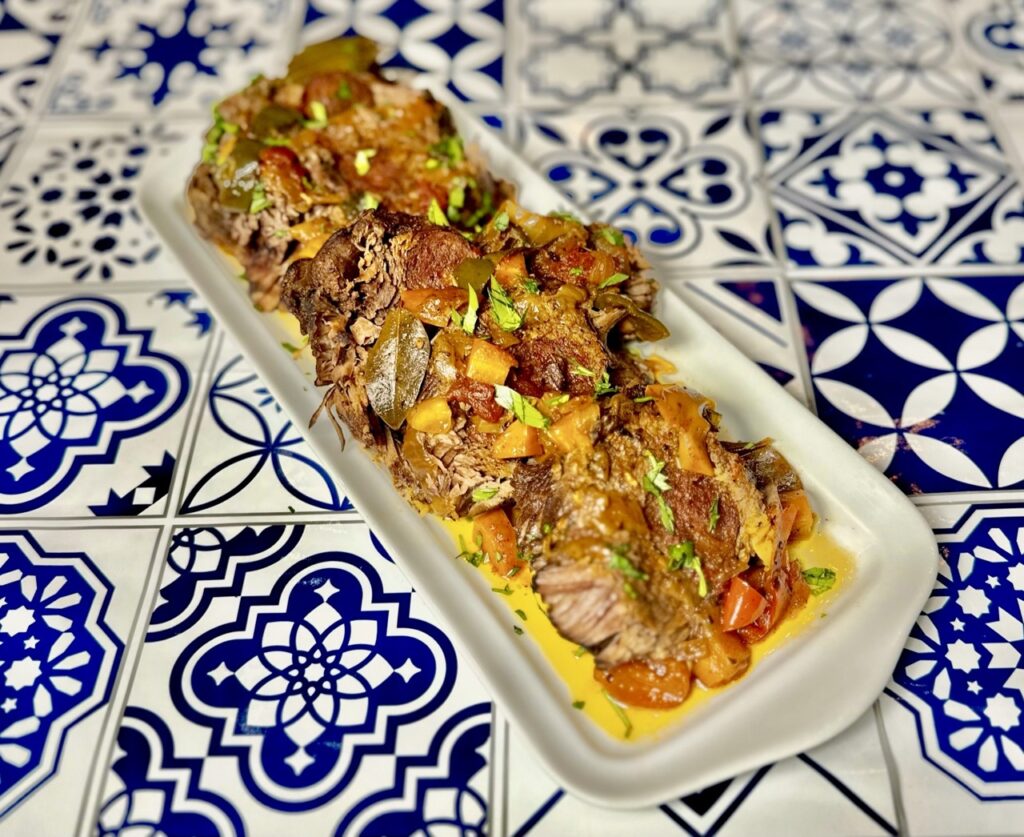
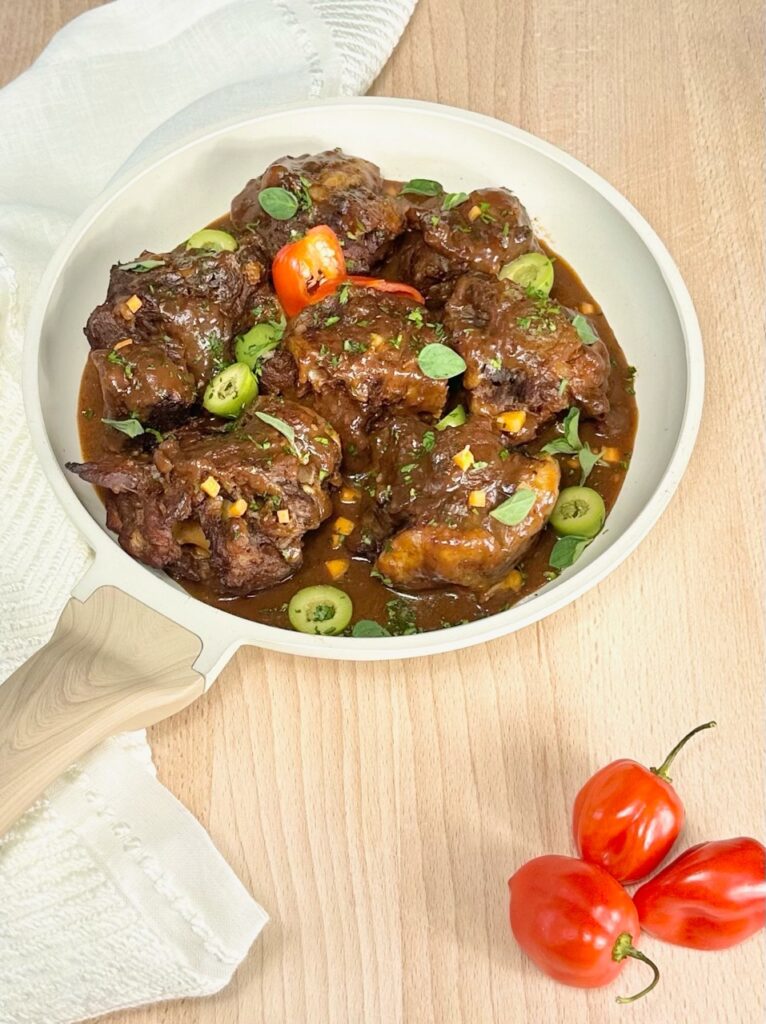
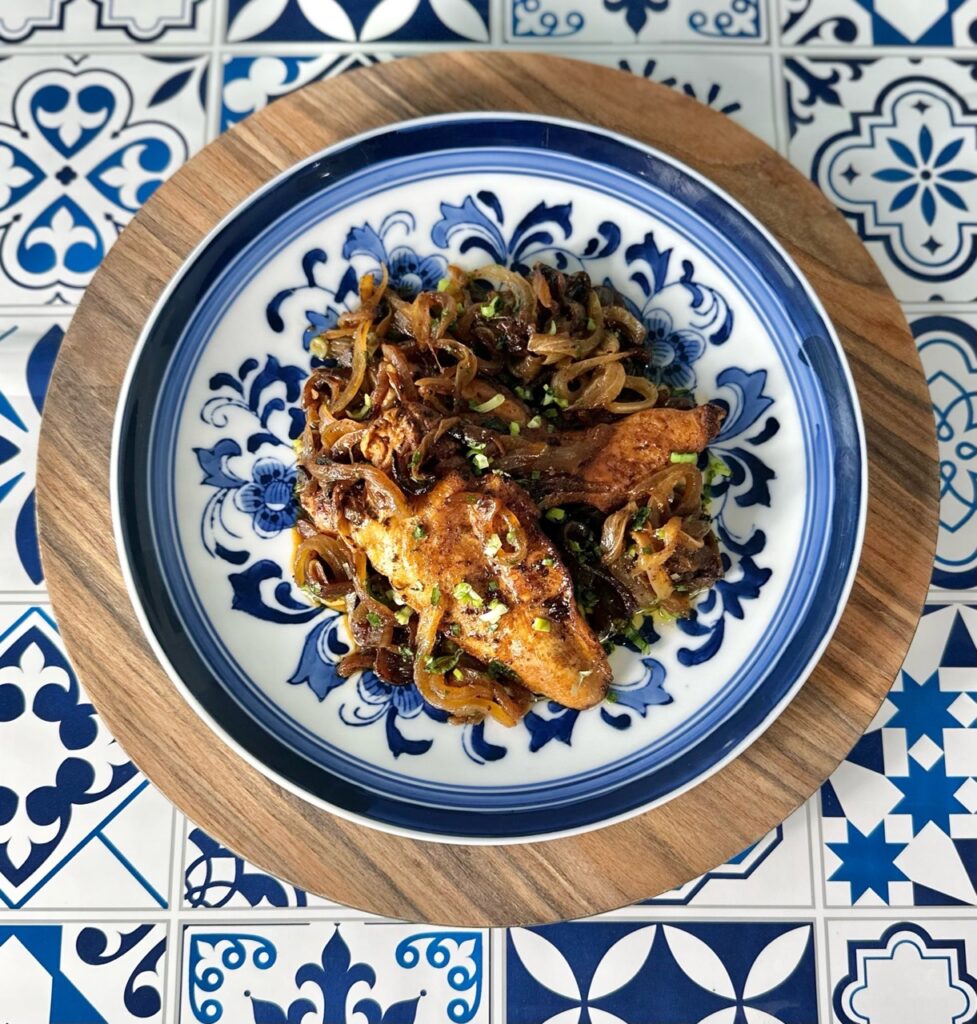
Tips about plantains:
Keep in mind, that Plantains do have a reputation for being tricky to work with.
Peeling can be hard, but we have a trick! When you go to peel the plantains they can be a little difficult. A trick is to slice one slit along the length of the plantain with a knife. Then submerge the entire plantain in very hot water for 5 minutes. Once you do this the skin will peel off very easy.
Plantains tend to dry out. When you are cutting the plantains before boiling, you don’t want to cut them in a small dice or they will absorb a lot of water and cause your fufu to be tasteless and watery. Keep them in larger chunks.
It’s important to keep the bananas submerged in the cooking liquid until just before mashing because they can try out.
Traditionally, fufu is made with green plantains but you can also make it with platano pinton, which is when the plantain is in the stage between green and black. Using this type of plantain or a combination of different plantains will make your fufu a little sweeter.
Cuban Fufu
Course: SidesCuisine: CubanDifficulty: Easy6
servings15
minutes30
minutes300
kcalIngredients
2 Green Plantains Large
5 strips of bacon, cut in small chunks
1 white onion, finely sliced
5 garlic cloves, finely minced
2 bay leaves
1 teaspoon of salt and freshly cracked pepper
1 to 2 cups Chicken Stock
¼ cup of parsley
Directions
- Cut the ends off the plantains. Slice the tough outer skin down vertically (careful not to pierce the inside of the banana). Peal completely then cut them into large chunks. Place them into a large pot.
- Cover the plantains with water. The water should be about 2 inches above the plantains. Add ½ teaspoon of salt to the water and bring the water to a boil, then lower the heat to low.
- You will cover and simmer until the plantain is fully cooked and tender. They should be ready in 30 to 35 minutes. To be sure they are perfectly cooked, insert a fork into the plantain. If it can pierce the plantain easily, it’s tender and ready!
- While the plantains are boiling make the flavoring for the fufu. In a separate pan add the bacon. Cook until it is golden and the fat has rendered completely for about 5-7 minutes on medium heat.
- Add the onions to the bacon and cook together. Cook the onions for about 5 minutes on low heat. If you notice at any point that the onions look dry, add a few tablespoons of olive oil. Add salt and pepper and garlic. Sauté for another 2 minutes. At this point you can reserve some of the garlic, onion and bacon mixture for garnish (2 tablespoons should work).
- Drain the plantains from the water and place them in a bowl. Mash the plantains then add them back to the pan with the onions and bacon.
- Add 1 cup of broth and continue to mash together with a wooden spoon. Add more broth as needed. It should look and feel like mashed potatoes.
- Garnish with more crispy bacon, chicharron, more fresh herbs and pickled onions. You can also add a squeeze of fresh lime.
